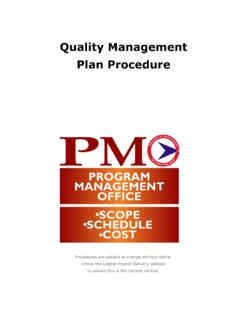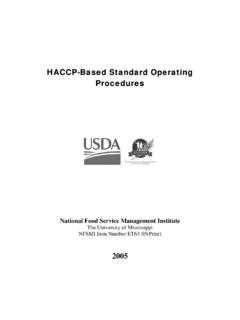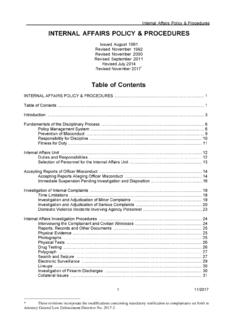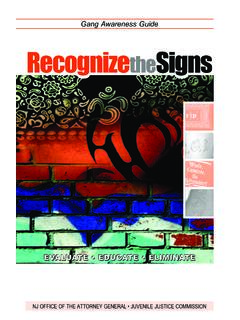Transcription of AG Guidelines for Sex Offender Registration and ... - State
1 attorney General Guidelinesfor Law Enforcementfor the Implementation ofSex Offender Registrationand Community Notification LawsChristine Todd WhitmanJohn J. Farmer, Jr. Governor attorney GeneralMarch 2000 Revised March 2000 IndexI. 1II. Statutory 4 III. Offenders to Whom the Statute 6IV. Notice to Offenders of Duty to Register .. 8V. Organizations in the Community Which May Receive 10VI. Definitions Related to Scope of 13 VII. Preparation of Discovery 15 VIII. Criteria For Assessing 18IX. Notice to Offenders of Tier Designation and Scope of Notification .. 20X. Conduct of Pre-Hearing Conferences and 22XI.
2 Scope of Community Notification .. 24 XII. Methods of 30 XIII. Maintenance of Records of Notification.. 47 XIV. Ongoing Obligation to Tier and 49 Revised March 2000XV. 50 ExhibitsOverview of Community Notification by Tier .. Exhibit AUnredacted and Redacted Notices .. Exhibit BUniform Language for Tier 2 .. Exhibit CUniform Language for Tier 3 .. Exhibit DRegistrant Risk Assessment Scale Manual .. Exhibit ERegistrant Risk Assessment Scale .. Exhibit FAttempted Delivery Form .. Exhibit GSchool Personnel Rules of Conduct .. Exhibit HCommunity Organization Rules of Conduct .. Exhibit IMegan s Law Rules of Conduct .. Exhibit JRules of Conduct for Businesses.
3 Exhibit KLaw Enforcement Guidelines for Community Notification .. Exhibit LInformation Reference Sheet for Principals .. Exhibit MCommunity Organization Information Reference Sheet for Official Supervisors .. Exhibit NSchool Principal Receipt Form .. Exhibit OCommunity Organization Designated Official Receipt Form .. Exhibit PMegan s Law Receipt Form .. Exhibit Q1 Revised March 2000I. INTRODUCTIONIn response to the public s demand for greater information regarding the identity andwhereabouts of previously convicted sex offenders who might prove a threat to the safetyof those in the community, the Governor and Legislature passed the Registration andCommunity Notification Laws (RCNL), 2C:7-1 et seq.
4 , commonly known asMegan's Law. This law provides for the creation of a State registry of sex offenders anda community notification procedure, which mandates County Prosecutors to placeoffenders into one of three categories which are distinguished by the level of risk of re-offense by the Offender . 2C:7-6 et seq. Following passage of the legislation,certain offenders filed suit in State court, raising a number of constitutional bars to theimplementation of the law, culminating in Doe v. Poritz, 142 1 (1995) in the NewJersey Supreme Court. On July 25, 1995, the Supreme Court decision was issuedupholding the constitutionality of the statute.
5 Further, the Court's opinion required theinclusion of a judicial review of the Prosecutor's determination as to risk of re-offense andthe scope of notification to the the New Jersey Supreme Court made clear, the purpose of this legislation is toprovide pertinent information to law enforcement and, in appropriate circumstances, toneighbors, parents and children, as well as community organizations which care for orsupervise women or children. It is hoped that, armed with knowledge of the descriptionsand whereabouts of sex offenders and pedophiles, community members will be in the bestpossible position to protect their children and themselves.
6 To facilitate this process,various State agencies have been charged with the responsibility of informing County2 Revised March 2000 Prosecutors about the imminent release of such offenders. In turn, the Prosecutors havebeen charged with the responsibility of determining the risk of re-offense and placing theoffender in a "tier" based upon that determination. Further, pursuant to these Guidelines ,the County Prosecutors have been charged with overseeing the actions of local lawenforcement agencies and State Police who will, pursuant to 2C:7-6 and 7,disseminate the appropriate notification required in each handing down the Doe decision, the Supreme Court of New Jersey furtherrefined the hearing process in response to the decision of the Court of Appeals for theThird Circuit in v.
7 Verniero, 119 F. 3d 1077 (3d Cir. 1997). Also upholding theconstitutionality of the statute, the Third Circuit held that due process requires a standardof proof of clear and convincing evidence, with the burden of persuasion on the State forthe purpose of determining the risk level of the Offender , the geographic area within whichnotice is to occur and those to whom the notice will be provided. The Supreme Court ofNew Jersey incorporated these principles into the judicial review procedures. The statute provides for the attorney General to promulgate Guidelines andprocedures to promote uniform application of the law.
8 2C:7-8. In Paul P. , 80 F. 320 ( 2000), the federal court made clear that theseguidelines must establish a system of community notification which mandates a uniformmethod of distribution that reasonably limits the disclosure of information to those citizensentitled to receive it. Accordingly, the following Guidelines provide law enforcement withthe pertinent procedures for registering offenders, conducting the hearings required by the3 Revised March 2000 Supreme Court of New Jersey and implementing notification, thus fulfilling the legislativemandate of the statute authorizing notification and complying with the decisions of March 2000II.
9 STATUTORY RESPONSIBILITIESIt shall be the responsibility of the Prosecutor of the county in which the person willreside to transmit Registration forms to the Division of State Police. It shall be theresponsibility of the Division of State Police to maintain the State Registry of sex offenders,including the update of current information, the input of new registrants and provision ofthat information to the National Sex Offender Registry. The Division of State Police shallalso act as the contact point for the State of New Jersey for dissemination of sex offenderinformation to other states , where appropriate. This includes informing the registeringagencies of other states about the relocation of sex offenders in or out of those , whenever a law enforcement agency receives a Registration card which lists an out-of- State address, the card should be sent to the Division of State Police, Records andIdentification, State Bureau of Identification, Records Assembly Unit, which will notify thatstate s registering agency.
10 Also, State Police will notify the registering agency in anotherstate when a registrant leaves New receipt of a completed sex Offender Registration form, it shall be theresponsibility of the County Prosecutor to render a determination as to the level of risk ofre-offense and the scope of notification for each Offender . The decision is subject tojudicial review in accordance with the procedures established by the Supreme Court ofNew Jersey. Under the direction of the County Prosecutor, the chief law enforcementofficer of the municipality, or the State Police in municipalities where there is no local lawenforcement officer, shall then effectuate notification of the location of registered will be provided to the appropriate law enforcement agencies and, in certain5 Revised March 2000circumstances, the community likely to encounter the Offender .















